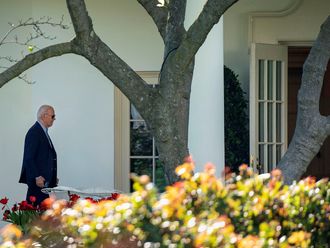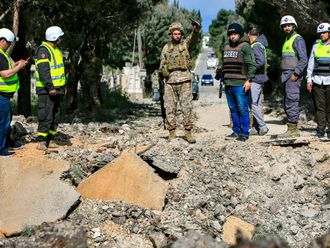George Hincapie
Armstrong teammate for 11 seasons.
The beginning of it all happened in 1995. Hincapie recalled coming home with Armstrong from the Milan-San Remo race that year and said Armstrong was “very upset” that he was getting beat by others suspected of using performance-enhancing drugs.
“As we drove home Lance said, in substance, that, ‘This is bull people are using stuff,’ and ‘We are getting killed.’ He said, in substance, that he did not want to get crushed anymore, and something needed to be done. I understood that he meant the team needed to get on EPO [performance-enhancing drug].”
At a race in Spain in 2000, Hincapie said Armstrong told him he was “feeling good” and had just taken some “oil,” meaning testosterone.
Hincapie said he was aware Armstrong used blood doping in every Tour de France from 2001 to 2005. Before the 2005 Tour de France, Hincapie said Armstrong “gave me two vials of EPO while we were both in Nice, France.” Hincapie said his admission was not meant to hurt Armstrong. “I have witnessed many important things that Lance has done for his fellow man through battling cancer and being a role model for many. My testimony is not intended to take away from or diminish those things.”
Hincapie said that he, Armstrong and teammates raced in an era when cycling was inundated with performance-enhancing drugs.
“The doping controls were not very good, and we came to believe that we needed to use banned substances to compete at the very highest levels. While I understand that the choices we made were wrong, I understand why we made them and why, at the time, we felt justified in making them. I do not condemn Lance for making these choices, and I do not wish to be condemned for the choices I made.”
Michele Ferrari
Doctor who served as a consultant and, according to USADA, assisted Armstrong and teammates with doping.
From February 1996 through December 2006, Armstrong made 11 payments, totalling a little more than $1 million (Dh3.67 million), to a Swiss company Ferrari controlled. The payments ranged in amounts from slightly less than $15,000 on February 21, 1996, to $300,000 on October 6, 2003. According to the report, rider Tyler Hamilton “recalled that in 2001 Dr Ferrari told Armstrong that he could continue to use EPO in competition if he microdosed EPO and slept in an altitude tent. Ferrari’s explanation was that ‘The altitude tent would boost the natural production of EPO and throw off the EPO test.’ “
The report says rider Floyd Landis recalled that Ferrari attended a pre-Tour de France training camp for Armstrong’s US Postal Service team in Spain in 2004 “to monitor the team members’ blood values and that Ferrari ‘administered EPO and testosterone as needed to ensure the team was ready for the Tour de France.’ “
Contrary to statements and/or testimony over the years by Armstrong; Armstrong’s agent, Bill Stapleton; and Armstrong’s spokesman Mark Fabiani, the report says Armstrong’s professional relationship with Ferrari continued after Ferrari was convicted for sporting fraud in October 2004 by an Italian court for advising Italian cyclists on the use of EPO and Andriol. In the immediate wake of the conviction, Armstrong had reacted by announcing he was suspending his professional affiliation with Ferrari.
According to the report, Fabiani said on April 15, 2010: “Lance has not had a professional relationship with Ferrari since 2004. ... Lance last saw Dr Ferrari about a year ago.”
The report later says: “Fabiani’s statement on behalf of Armstrong was a lie. Indeed, Armstrong’s professional relationship with Ferrari continued even into preparation for Armstrong’s new career in triathlon.”
Christian Vande Velde
Armstrong teammate from 1998-2003.
After winning his fourth straight Tour de France in 2002, Armstrong returned to Girona, Spain, and asked Vande Velde to come to Armstrong’s apartment, where Ferrari also was present. Armstrong told Vande Velde that if he wanted to continue to ride for the team he “would have to use what Dr Ferrari had been telling him to use and would have to follow Dr Ferrari’s programme to the letter.” Velde said the conversation “left me with no question that I was in the doghouse and that the only way forward with Armstrong’s team was to get fully on Dr Ferrari’s doping programme.” “Lance called the shots on the team,” Velde said in the affidavit. “He was very aware of what went on in the team and what Lance said went. Johan Bruyneel was the team director but if Lance wanted him out he would be gone in a minute.” As a consequence of Armstrong’s warning, Velde said he stepped up his drug use.
Frankie Andreu
Armstrong teammate throughout the 1990s.
Andreu describes using performancing-enhancing drugs, including the practice of carrying EPO in a thermos to keep it cool. He says many riders were seen with a thermos, including Armstrong.
Andreu says Armstrong tried to convince him for several years to seek treatment from Ferrari. Andreu’s wife, Betsy, recalls a trip in 1999 to Milan with Andreu, Armstrong and Armstrong’s wife, Kristin, in which they stopped at a hotel/gas station outside the city so Armstrong could meet up with Ferrari. Armstrong went into Ferrari’s camper for an hour. On the way to Milan, Armstrong derided Andreu for not working with Ferrari, to which he told his wife: “I don’t want that [stuff] in my body.”
Later in 1999, before the Tour de France, Andreu noticed bruising on Armstrong’s arm from a syringe before a public weigh-in for the event. Armstrong said, “Oh [no], that’s not good.” and had it covered with makeup.
Jonathan Vaughters
Armstrong teammate from 1998-’99.
Vaughters discussed EPO with Armstrong, who seemed to have information on how the test operated. He testified that he saw Armstrong inject EPO during 1998 Vuelta a Espana.
One night during the race, Vaugthers was in Armstrong’s room using his laptop when Armstrong injected himself in front of Vaughters with a syringe used for EPO injections.
“Now that you are doing EPO too, you can’t go write a book about it,” Armstrong said.
Vaughters also described how team doctor Pedro Celaya snuck a liter of saline past a drug tester and into Armstrong’s hotel room to help the cyclist pass the test.
Vaughters said they “had a good laugh about how he had been able to smuggle in saline and administer it to Lance essentially under the UCI inspector’s nose.”
Emma O’Reilly
Masseuse for Armstrong’s team from 1996-’99.
O’Reilly says she made an 18-hour trip in May 1999 from France, to Piles, Spain, to Nice to deliver a bottle of pills to Armstrong that she understood to be banned drugs.
Also in 1999, Armstrong tested positive for cortisone he wasn’t authorized to use. O’Reilly said she was in the room giving Armstrong a massage when Armstrong and others discussed a story to explain the positive result.
They agreed to produce a backdated prescription for cortisone cream, saying it was being used to treat a saddle sore. O’Reilly “understood from Armstrong” according to the USADA document, that the postive test was the result of a cortisone injection.
After the meeting, Armstrong told O’Reilly: “Now, Emma, you know enough to bring me down.”
David Zabriske
Armstrong teammate from 2001-’04.
Zabriskie, whose father had died prematurely after a history of drug addiction, said he was devastated to learn how extensive the doping was on Armstrong’s team.
Zabriskie said Bruyneel and team doctor Luis Garcia del Moral approached him about using EPO and testosterone, pressuring him to do it for the good of the team. Zabriskie said he gave in, and later cried that night and felt severely guilty about cheating. He later wondered if serious crashes he had in 2003 and ‘04 were some sort of punishment for his actions.
Zabriskie said it was so well-known that the team was using EPO that little effort was made to conceal it.












